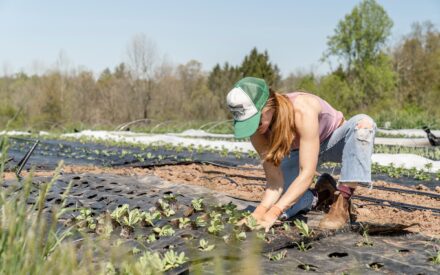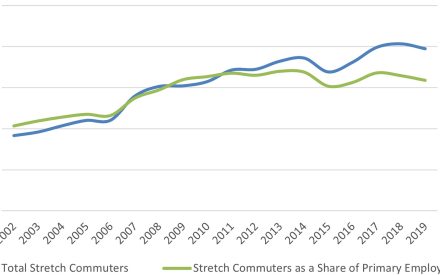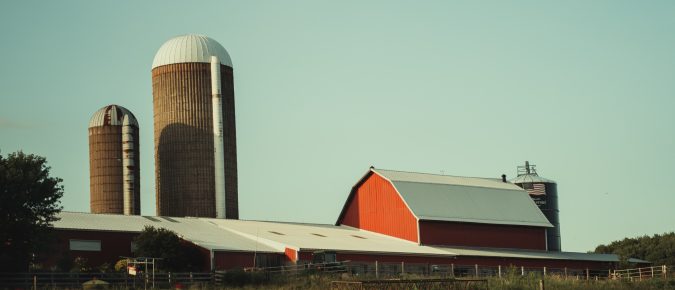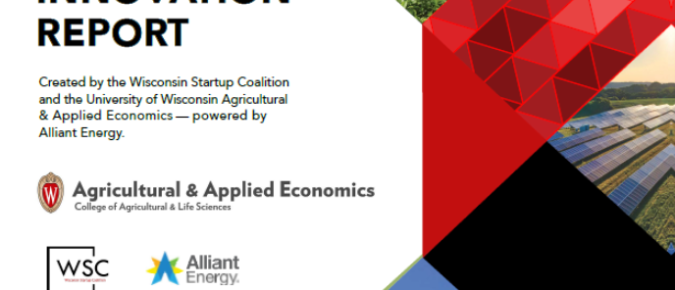Publications
Journal Articles
Internal Publications
WIndicators Volume 7, Issue 1: Wisconsin Farming: Insights from the 2022 Census OF Agriculture
Every five years the United States Department of Agriculture (USDA) undertakes a detailed inventory of farming operations across the country. The most recent, the 2022 Census of Agriculture, aims to provide a detailed snapshot of the nation’s farming economy, including information on farm demographics, production practices, land use, and economic trends. The intent of this issue of WIndicator is to provide an overview of recent trends in Wisconsin farming using the Census of Agriculture. We pay particular attention to the changes since the last Census in 2017 to understand trends in key metrics for Wisconsin agriculture with some references to longer term trends (1997 to 2022).
WIndicators Volume 6, Number 2: The Role of Childcare in the Labor Market: A Long-Run Perspective
There are a number of factors feeding into the current labor shortage, and while the problem seemed to accelerate after the COVID-19 pandemic, we have been facing a downward trend in unemployment for over a decade.
Business Owners of Color in Wisconsin: Representation, Profitability, and Growth
Wisconsin follows the nationwide trend of a relatively small yet growing number of diverse business owners. This recent growth suggests a promising and economically important future for diverse business owners despite evidence that they face significant challenges.
Willingness to Pay for Broadband Internet
The UW-Madison EDA University Center conducted a statewide survey of Wisconsin residents on broadband access and affordability, with the goal of estimating the willingness to pay for broadband. As the state makes significant investments in broadband infrastructure, attention is shifting to the willingness, or ability, of people, particularly lower income people, to pay for broadband subscriptions.
A Trade Area Analysis of Wisconsin Retail and Service Markets: Updated for 2022
Using 2022 county sales tax data, we examine the strength and weaknesses of Wisconsin retail and service markets through the application of the tools of Trade Area Analysis.
WIndicators Volume 6, Number 1: Contributions of Veterans to the Wisconsin Economy
One long-held strategy to foster economic growth and development is to recapture tax dollars that flow to higher units of government. Paying taxes to higher units of government, such as the state and/or federal government, is a leakage from the local economy. In a sense, these leakages are akin to a local business buying inputs from vendors outside of the community or local residents shopping outside of the community. While many communities strike to close these leakages by encouraging firms and shoppers to buy locally, such an approach does not apply to state and federal taxes. Rather, communities often strive to have those dollars returned to the community through local state and federal government spending.
A Trade Area Analysis of Wisconsin Retail and Service Markets: Updated for 2021
Using 2021 county sales tax data, we examine the strength and weaknesses of Wisconsin retail and service markets through the application of the tools of Trade Area Analysis. Only those counties that have elected to collect the optional county sales tax are included in the analysis. Because sales tax data are used one must keep in mind that the analysis focuses only on taxable sales and may not reflect the total level of activity in the county. Using Pull Factors and measures of Surplus and Leakage the relative strengths, and weaknesses, of local retail and service markets are identified.
WIndicators Volume 5, Number 5: Understanding and Mobilizing the Potential of Entrepreneurs of Color in Wisconsin
People of color are starting and growing businesses at high rates in Wisconsin. This study explored the experiences of BIPOC entrepreneurs in Fond du Lac County through 1-1 interviews and the Community Capitals Framework (CCF). Business owners expressed satisfaction with the natural beauty and safety of the area while describing limited technical knowledge (human capital), networks (social capital), and financial capital in the critical startup phase of their entrepreneurship. Business development technicians and educators can use this study to better support entrepreneurs of color in their Wisconsin communities.
COVID-19 and the Economy: U.S. Resident Experiences in the Late Stage of the COVID-19 Pandemic
As we near the third anniversary of its start, the COVID‐19 pandemic has been a global health challenge with
far‐reaching political, economic, and sociological implications. The loss of life and health has been immense. The U.S. death toll from COVID‐19 exceeded one million in May 2022, and research indicates that roughly 20% of adults have at least one health condition related to a previous COVID‐19 infection.
WIndicators Volume 5, Number 4: Returns to Higher Education
With rising costs to students and soaring debt levels, many people are questioning the value of pursuing higher education. Nationally, a person with a bachelor’s degree will earn about $560,980 or 37.8% more than a person with a high school degree, even while accounting for lost years of work while obtaining the degree.
WIndicators Volume 5, Number 3: Farm Household Income
As a growing number of Wisconsin farms struggle to survive, many farm households (families) are dependent on off farm income to offset weak and unstable farm sourced income. Over the five-year average (2016-2020) average household income for Wisconsin farm operators is $98,353of which $20,210 comes from farming activities, and the remaining $78,143 comes from off farm sources. One strategy to ensure the continued operation of most Wisconsin farms is to focus on enhancing off farm employment opportunities.
Rural Innovation Report
EXECUTIVE SUMMARY May 2022 — Innovation moves the economy forward. Innovations are new products, processes, or services that create value for customers. Innovations often signal an improvement over a past model or way of doing things. Innovations can be significant, disrupting the status quo. Many innovations, however, are modest, offering small increases in quality of […]






















